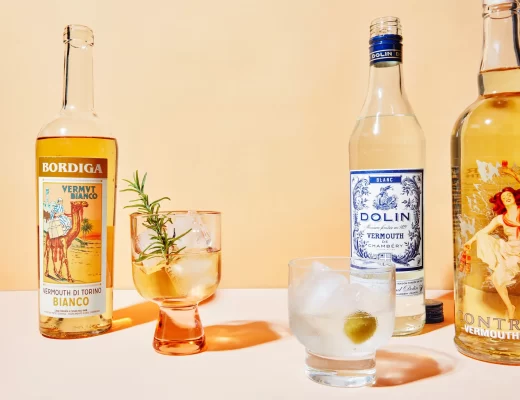If you can’t travel to Spain, let Spain come to you! I’m not talking about crowded airports and passport lines, no, I’m looking at a unique and exciting wine that is centuries old yet has stood the test of time and is still inventing new ways to entertain the palate. Say hello to 21st Century sherry. This oft overlooked and incorrectly classified wine is the perfect companion to an enormous range of foods and is as at home in cocktails as it is in creative culinary dishes.
A storied history
Sherry has played an important role in wine making as far back as 1000 B.C., indeed the Romans introduced Vinum Cerentensis to what is now called Jerez. The modern-day “Sherry Triangle” in Spain is home to the Palomino, Moscatel and Pedro Ximénez grapes. These grapes are extremely well suited to the soils and climates of southern Spain where they produce some of the driest and sweetest wines in the world.
Read Also: Venti Amaro: Reviving the sophistication of the after-dinner digestif
The ancient Bodegas of Jerez de la Frontera, Sanlucar de Barrameda, and El Puerto de Santa Maria are home to vinification of wine in a technique that enables the finished sherry to contain wine that may have been aged over 100 years. The Solera technique used to age sherry in oak casks allows the natural environment to craft a wine that has a delightful and varied flavor profile nurtured by climate, time and the winemaker in combination. The cellars are cathedrals of barrels all designed to give the sherry the right kind of exposure for either biological aging (Fino and Manzanilla sherry) oxidative (Oloroso sherry) aging, or both (Amontillado and Palo Cortado sherries). Moscatel and Pedro Ximénez sherries are briefly fermented before being fortified to stop the process and allow the natural grape sweetness to predominate.
Modern day dining
Bottled and age dated sherry has been internationally available for decades. A new wine style released in 2010 is En Rama sherry. Minimally filtered, this is the purest sherry example there is. All sherry is fortified with grape spirit to inhibit fermentation and maintain an alcohol level in the finished product of 15% to 22%, depending on the specific sherry.

Sherry’s diversity of flavour and texture make it superbly versatile and easy to pair with an enormous variety of foods. The saline and fresh notes of Manzanilla make it a great partner for Japanese foods, salads, and charcuterie. Fino’s almond overtones lend a nice contrast to seafood, salty nuts and olives. If you are looking for a well-suited match for roasted veggies, white meats, or spicy foods, Amontillado offers a nutty and toasted smokiness with just enough acidity. The smooth and sensuous mouth feel of Oloroso has a dry finish which meets grilled fish, sharp cheeses, and steak gloriously. When it comes to dessert, a voluptuous Pedro Ximénez or Moscatel is sweet, has a warm finish and pairs exceptionally well with vanilla ice cream, crême brule , brownies or dark chocolate ganache.
Cocktails anyone?
Looking for a cocktail? Sherry is one of the best companions for just about every spirit on the market. The light flavors of vodka, gin or white rum compliment Fino perfectly. Manzanilla with champagne, grenadine and pineapple sorbet make a Patio de Luz cocktail. A Sherry Cobbler combines Amontillado with simple syrup and citrus fruit slices. Something a little more robust? Try an East India Manhattan. A blend of East Indian Solera sherry with bourbon, bitters, lemon juice and peel. An evening with Pedro Ximénez can be spent on the rocks or in the company of rum and bitters.

Sherry bodegas in Spain have long standing and proud reputations. The House of Lustau (Lustau) has been expertly crafting sherry since 1896 and their commitment to excellence can be found in every bottle you open. Brands like Lustau, Gonzalez Byass (Tio Pepe), AND Sandeman have offerings in North America and Europe. Whatever the occasion, there is a sherry to match the mood.
 Gillian Marks, MPH, Ph.D. is a Certified Sherry Wine Specialist (CSWS®) from the Wine Scholar Guild and has a Wine and Spirits Education Trust – Level 2 Certification in Wine. Her career in Nutrition, Toxicology and Risk Assessment has brought her from England to Southern California and she has lived and worked across the US, South Korea and Canada. Gillian is presently the Senior Director of Environment, Health & Safety and Risk Programs at San Diego State University, and when she is not fully engaged in keeping SDSU safe, she exercises her passion for Sherry and French wines seeking out opportunities to educate, write and learn as often as possible.
Gillian Marks, MPH, Ph.D. is a Certified Sherry Wine Specialist (CSWS®) from the Wine Scholar Guild and has a Wine and Spirits Education Trust – Level 2 Certification in Wine. Her career in Nutrition, Toxicology and Risk Assessment has brought her from England to Southern California and she has lived and worked across the US, South Korea and Canada. Gillian is presently the Senior Director of Environment, Health & Safety and Risk Programs at San Diego State University, and when she is not fully engaged in keeping SDSU safe, she exercises her passion for Sherry and French wines seeking out opportunities to educate, write and learn as often as possible.
![]()













